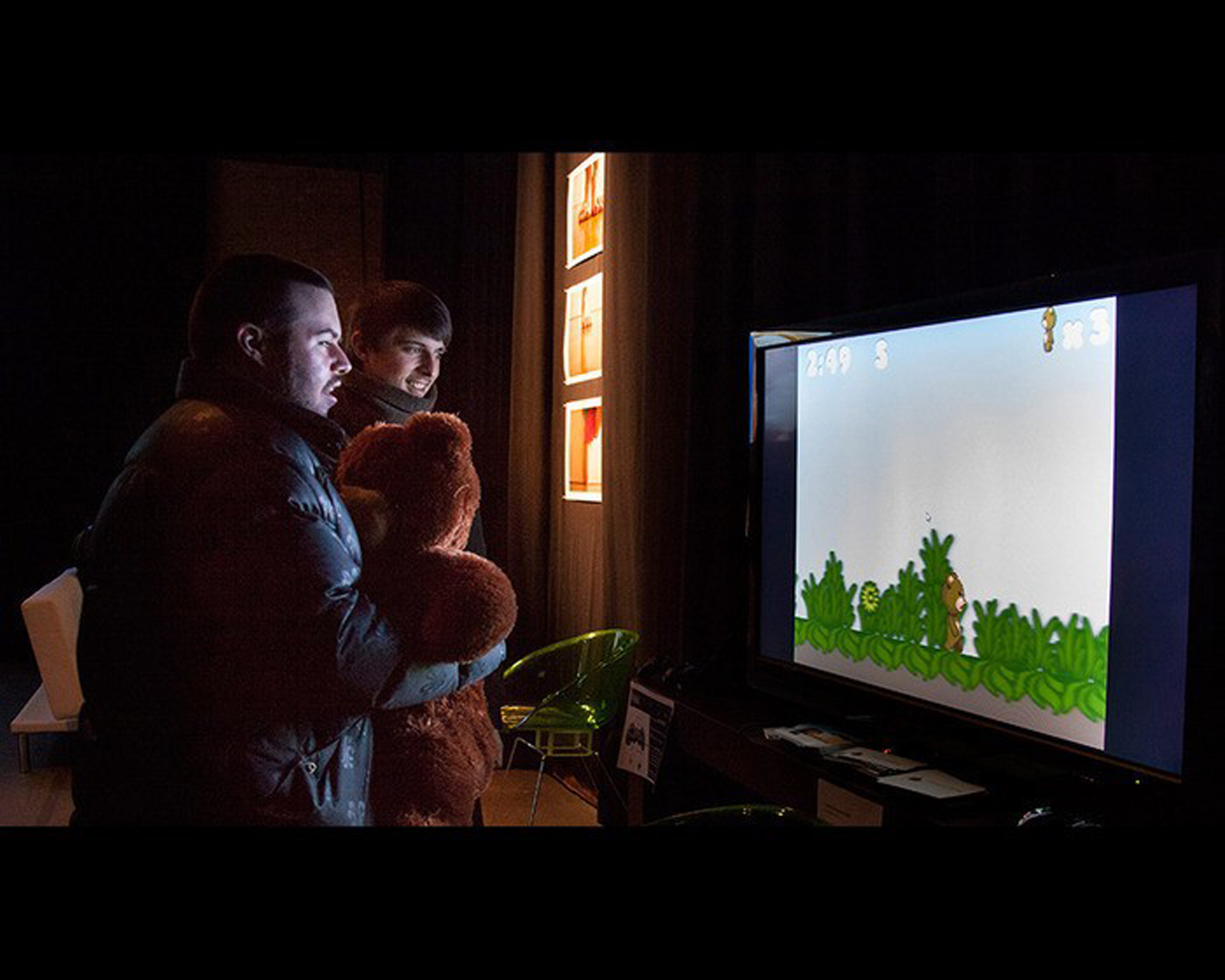Critical Gameplay: Big Huggin’
Symposium:
Session Title:
- Game Art
Presentation Title:
- Critical Gameplay: Big Huggin’
Presenter(s):
Venue(s):
Abstract:
Abstract
Big Huggin‘ is an alternative interface game designed to critique the way we play. It is offered as part of the ongoing Critical Gameplay project. Instead of firing toy guns or gesturing abstractly, players must hug a large stuffed animal to win the game. The game has been played by more than 2000 people at 8 venues in North America, South America and Europe..Introduction
Big Huggin‘ is a unique gameplay experienced designed by applying Critical Design methodologies to the implementation of a video game. Critical Design is an exercise in critique through which social-cultural values are exposed[1]. The process involves examining socio-cultural trends and producing artifacts that heighten awareness to their attributes. The ongoing application of Critical Design practiced in the Critical Gameplay project seeks not only to offer alternative play, but to highlight assumptions players have about what types of games are interesting, engaging and even worth creating[2]. In this way, Critical Gameplay combines the goals of Critical Design with the Captology. Catpology is the study of computers as persuasive technology [3]. Critical Gameplay aims to change the way people play by offering alternative ways to play.Games in which players are awarded for offering affection are available, although they are largely provided as online play and commonly of a sexual nature[4]. There are also interfaces which have experimented with kissing [5], although such interfaces and their result are intimate or sexual.
The Critical Gameplay project games have the potential to provide solutions to a myriad of training and psychological challenges. While these potentials are acknowledged, it is not the primary goal of such work. Instead, the goal is to provide researchers, practitioners and consumers demonstrative work for intellectual consumption. As stated in early Critical Gameplay work, the goal is not financial profit, but intellectual profit.





